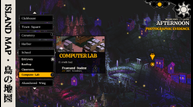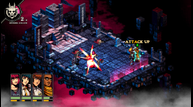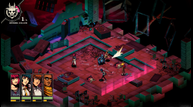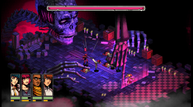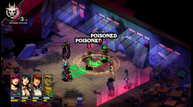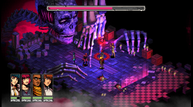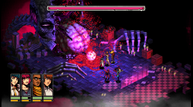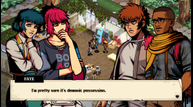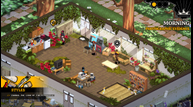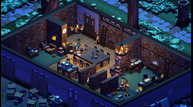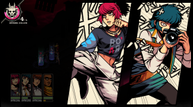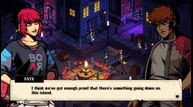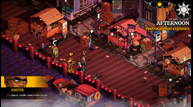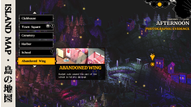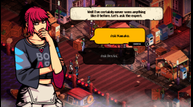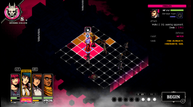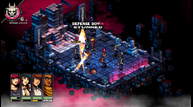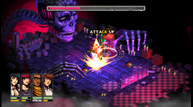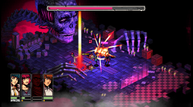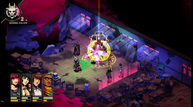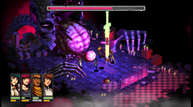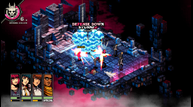
Demonschool PAX West 2023: Italian horror, Into the Breach-style fights, and a giant skeleton
Demonschool was a game that just popped out immediately when the PC Gaming Show revealed it last year. It re-emerged at the Guerrilla Collective stream several months ago and it always stuck out in my mind. It is a round-based RPG that looks to Italian horror as the heart of its visual direction. I met up with Brandon Sheffield, the game’s director at Necrosoft Games, to talk more about the game’s development and see the PAX West build of the game in action.
First, I asked him what makes Italian horror distinct from other horror subgenres for those not familiar with it. He told me that Italian horror is rooted in its utilizing the vividness of colors to indicate mood or points of interest. In Demonschool, Necrosoft Games emphasized the contrast between blue backgrounds and red lighting if there was an event happening. It immediately conveys a sense of danger to players.
To address the elephant in the room for RPG fans, I noted how people compared Demonschool’s in-game character models to the older Persona games. Of course, I also wondered if they looked at the Persona series in that regard. Brandon knew the responses surrounding their character models and noted that the development team wasn’t even aware that they looked like they were from Persona until people started drawing comparisons to them when they revealed the game.
He explained that the Necrosoft Games team thought a lot about how to portray their characters in Demonschool. They wanted an isometric camera perspective, yet also wanted their characters to retain a realistic body proportion. What they ended up with coincidentally coincided with how the Persona series handled it. Brandon suspected that Necrosoft Games went through a similar design process than the Persona development team many, many years ago in this specific instance.
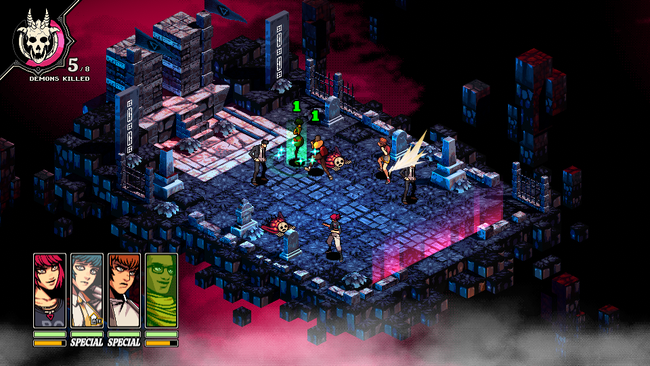
What mesmerized me in my brief time with Demonschool was how its battle system worked. Combat takes place on an isometric grid-based arena with your four party members facing the opposition. Normally, you’d think this is either a menu driven turn-based RPG or strategy RPG at first glance.
Demonschool, instead, opts for planning all your moves in advance before you execute them simultaneously. It’s a similar system to how Into the Breach handled its masterful approach in strategizing your moves and how transparent it was in communicating everything that was about to occur to players and enemies alike.
In fact, Brandon mentioned that Necrosoft Games was prototyping Demonschool's combat system before Into the Breach as even announced. He noted that it was such a bizarre coincidence when he saw how Into the Breach's battles worked. Brandon contacted Subset Games, the developers of Into the Breach, to talk about the similarities and differences Demonschool's combat system had with Into the Breach to make sure everyone was cool with each other.
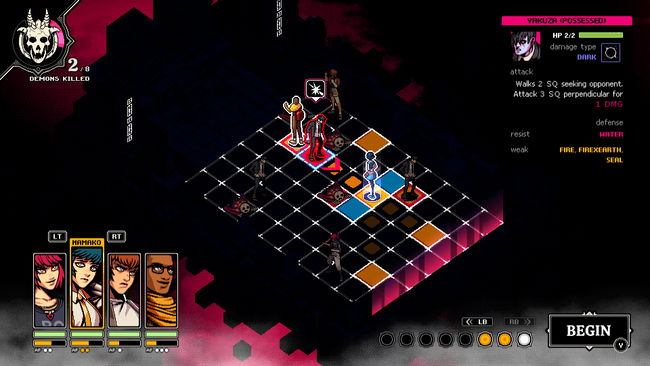
The first thing I realized is that characters cannot move freely around in Demonschool’s battles. They can move in a straight line along the y-axis or move diagonally in a linear pattern. Characters can sidestep to a single space to the left or right of them to alter their movement trajectory. If a character lands on a tile adjacent to an enemy, they will automatically attack it - no need to pop-up a menu to select an attack command.
Some characters have unique effects when interacting with enemies too. My two offensive-oriented allies, Faye and Destin, were able to push back enemies they attacked so if a cluster of enemies were right by one another in a straight line, it’d be beneficial to reposition those two characters in a way that could hit all of them at once.
Another character, Namako, normally doesn’t deal damage when she’s placed by an adjacent foe. Instead, she’s a utility character that swaps places with any enemy that she directly runs into, stunning them in the process. If she steps onto an enemy’s tile from one tile down, for example, she pulls them behind her onto that tile she was on and is now where that enemy used to be. Plus, that enemy is stunned for a turn.
While this repositioning ability doesn’t make a great first impression initially, it is way more useful than you think. Stunning to delay enemy turns is obviously handy, but what if Namako’s tile had a few nearby allies? She’d pull enemies into that tile, stuns them, and any character by that tile will automatically attack that enemy. If two or more characters attack an enemy simultaneously in that fashion, they’ll execute a combo attack together.
Our fourth party member in the Demonschool PAX West demo was Knute, a healer that made sure everyone was in tip-top shape. He also doesn’t deal damage though in exchange, he’ll provide a substantial attack buff to healing characters that already have full HP instead.

There are Special meter bars that charge up underneath each character’s portrait. As you might expect, these allow allies to fire off incredibly powerful skills when they’re filled up. It allows Namako, who can’t inflict damage normally, to access a powerful AoE spell that does respectable damage to everything in its path. Knute can provide healing, or buffs, to the three tiles in front of him all at once.
The amount of actions a player can take is dictated by 8 Action Points per round. How much AP is spent depends on how much a player plans for a single character to act. Every character on the battlefield each starts off with a 1 AP cost for them to act. If you want that same character to take another action, it will cost 2 AP; prepare to spend 3 AP for that same character to act thrice.
AP values are isolated from one character to another. If I have Faye act two times, that won’t raise everyone else’s AP values universally. Assuming that I only planned to have Faye twice in that round so far, the AP values of Destin, Namako, and Knute are still at 1 AP because I didn’t do anything with them yet.
Players can rewind their planned actions at any time before they hit the Begin command. It’s an incredibly versatile and flexible system that will have players spend a lot of time thinking about how to best maximize what they could do in a single round of combat to minimize the risk of future rounds. As I mentioned earlier, it heavily reminded me of how Into the Breach handled its combat encounters.
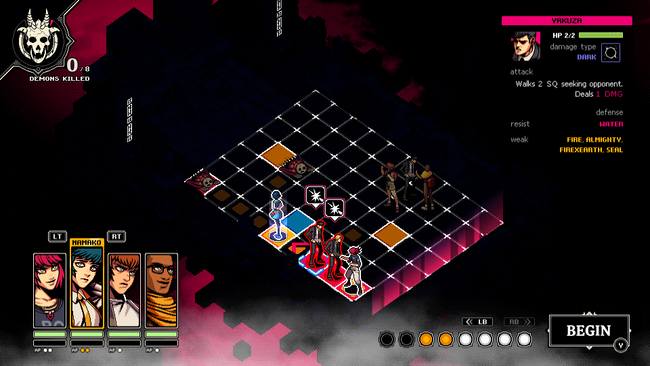
Usually, the goal of battles in Demonschool isn’t to annihilate every single enemy on the battlefield. There’ll be a circular meter at the top left of the combat interface that shows the goal of how many demons players need to kill before the win condition spawns. This win condition is a series of portals that fill up the tiles on the outer edge of the arena. Once players get a single character onto any of them and begin the round, they’ll close up the demon portal that will immediately clear any remaining demons left in battle, thus immediately winning the encounter.
After the battle, I got a chance to see the clubhouse hideout where your characters will be relaxing before they set out on their next adventure, whether that be helping people out with sidequests or advancing the main plot. Players will be able to decorate the clubhouse to their liking as they’re given new stuff to change its surroundings and layout.
Even though the starting default look of it is messy with overgrown leaves hanging from the wall, I was awestruck at the level of detail put into its environment. I loved seeing the small details on how an old PC is accompanied with random stuff on its desk and seeing stuff randomly sprawled out in the kitchen in front of the microwave. There’s a nice bit of secondary storytelling of how you, as the player, will eventually tidy up this place over time from rough, rickety beginnings.
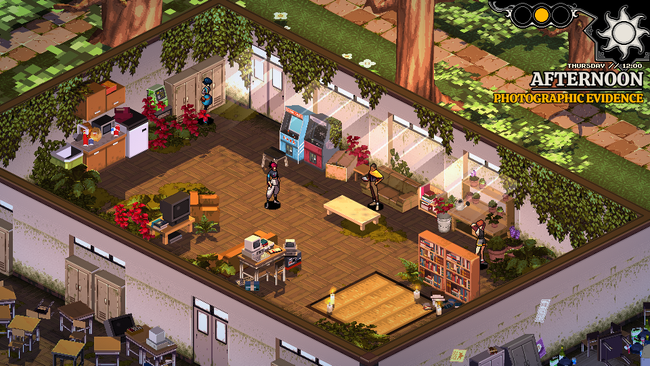
I was equally amazed at the few locales I saw when going to other parts of town. There’s a lot of care put into filling out the small details into each of the environments I saw. I asked Brandon what sort of real-world environments they looked to when crafting Demonschool’s livelier areas. He responded that the Necrosoft Games team largely turned to northern Europe for design inspirations, though there is also a tad bit of rural Japan imagery infused throughout it.
This description helped me parse some of the artistic directions in the imagery of its locales. There were certainly European-style structures, yet a bit of Japanese touches in some of its assets like Japanese lanterns illuminating a nearby dock. A booth that resembled something you’d commonly see in a Japanese festival was present as well. This culture fusion certainly gave a unique visual identity to Demonschool’s towns.
The last challenge I tackled in this Demonschool PAX West demo was an early major story boss - a giant 3D skeleton so large that only its head and hands could be seen from the combat arena. A lot of things were happening here.
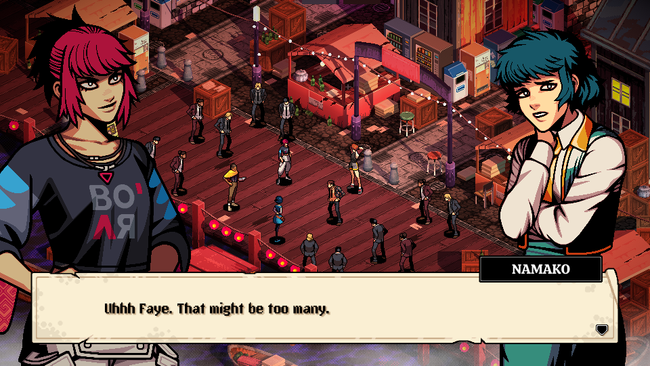
Though the boss had its own visible lifebar, players couldn’t normally attack it. They had to fend off respawning enemy mobs as they waited for distinct markers to appear that indicated where one of its fingers would land. Obviously, anything standing in the center of the marker when the finger landed would take damage. Players only had to hit the finger a single time for the skeleton to take it off.
With the boney finger out of the way, the boss performed a gnarly animation to reveal its weakspot. The skull would split wide open vertically in half, blood spewing from the fleshy bits still hanging off of it, and its brain would plop onto the battlefield itself that could be hit. Once again, players would only need a single character to attack it once to deal a significant amount of damage; this time, it depleted its lifebar.
This was the general flow of this fight and each cycle would add an additional finger for players to quickly deal with. All the while, they had to control the minor enemies that were respawning. Plus, some specific enemies were trying to make their way onto the player’s edge of the arena that would trigger an automatic loss, so players had to protect that zone too. There were times when the skeleton boss would do a wide sweeping AoE attack with its fingers at certain parts of the map.
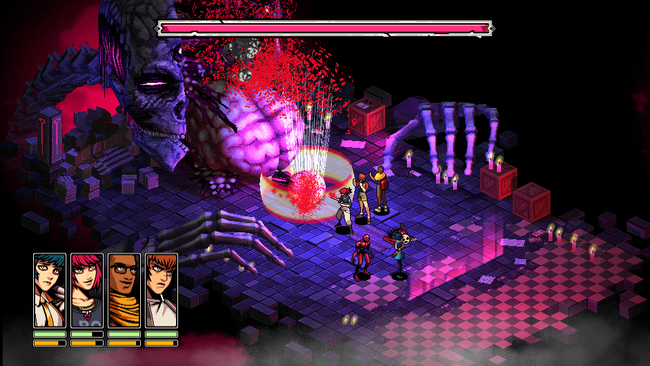
It was an excellent fight that displayed how complex its bosses were going to be and how players would have to be flexible in adjusting their strategies from round-to-round. In some rounds, their allies may have to take damage for the sake of making sure that enemies don’t get too close to the area they had to protect. At other times, players may have to forego maximizing damage output to heal up and opt for a safer approach going forward. Instead of firing off a Special attack as soon as its meter is charged, perhaps it’s best to save it at a more opportune time to more effectively turn the tide of combat around.
Demonschool surprised me a lot with how engaging its battles were and it’s generally just a pretty game to look at from top to bottom. Brandon mentioned that there’ll be a large focus on raising your relationships with your allies; up to 15 playable characters are planned in its full release. Players will learn more about characters the more they spend time with them and this will influence which ending they’ll get from the game’s multiple endings. The title is set to release on PlayStation 5, PlayStation 4, Xbox Series X|S, Nintendo Switch, and PC (Steam) some time this year.


